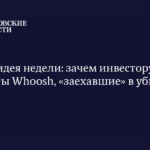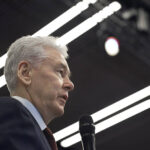According to a White House official, the US President believes that “both sides are not sufficiently prepared for negotiations.” Information indicates that preparations for the meeting are currently on hold.
Recently, a conversation took place between Russian Foreign Minister Sergey Lavrov and US Secretary of State Marco Rubio, where they discussed preparations for the second meeting between Vladimir Putin and Donald Trump. Following their discussion, the White House noted that Russia has not changed its position regarding the Ukrainian settlement.
There have been no official statements about canceling plans for the meeting between Russian and US leaders. The bilateral summit was planned to take place in Budapest.
White House
The White House is the official residence and workplace of the President of the United States, located in Washington, D.C. It was designed by James Hoban and its construction was completed in 1800; President John Adams was the first president to reside there. The building has been expanded and renovated over the centuries, including a major reconstruction after it was burned by British forces in 1814 during the War of 1812.
Russian Foreign Ministry
The Russian Foreign Ministry, officially the Ministry of Foreign Affairs of the Russian Federation (MID), is the government body responsible for managing the country’s international relations. Its history dates back to the Collegium of Foreign Affairs established by Peter the Great in 1717, evolving through the Soviet era as the People’s Commissariat for Foreign Affairs. Today, it formulates and implements Russian foreign policy from its iconic Stalinist skyscraper on Smolenskaya-Sennaya Square in Moscow.
US State Department
The United States Department of State, founded in 1789, is the federal executive department responsible for conducting American foreign policy and international relations. It is headed by the Secretary of State and manages diplomatic missions, negotiates treaties, and represents U.S. interests worldwide. As the oldest and most senior cabinet-level agency, it plays a central role in shaping the nation’s engagement with the global community.
Vladimir Putin
Vladimir Putin is a Russian political leader, not a place or cultural site. He has served as either President or Prime Minister of Russia since 1999, a period marked by the centralization of power and Russia’s re-emergence as a significant actor on the global stage. His tenure has been defined by events such as the second Chechen war, the 2014 annexation of Crimea, and the 2022 full-scale invasion of Ukraine.
Donald Trump
Donald Trump is a former U.S. President and businessman, not a physical place or cultural site. His business career included real estate development, such as Trump Tower in New York City, before he entered politics and served as the 45th President of the United States from 2017 to 2021.
Sergey Lavrov
Sergey Lavrov is not a place or a cultural site, but a prominent Russian politician who has served as the Minister of Foreign Affairs of Russia since 2004. He is a key figure in modern Russian diplomacy and has been a central actor in shaping the country’s foreign policy for nearly two decades.
Marco Rubio
Marco Rubio is not a place or cultural site, but a prominent American politician. He has served as a United States Senator from Florida since 2011 and was previously the Speaker of the Florida House of Representatives. His political career has been a significant part of recent U.S. political history, including a notable run for the Republican presidential nomination in 2016.
Budapest
Budapest is the capital of Hungary, formed in 1873 by unifying the three historic cities of Buda, Óbuda, and Pest. The city is renowned for its stunning architecture, including the neo-Gothic Parliament Building and the historic Castle Hill, which reflects its long history from a Roman settlement to a major European capital. It is also famous for its thermal baths, a legacy from both the Turkish Ottoman era and its geological setting atop numerous hot springs.





